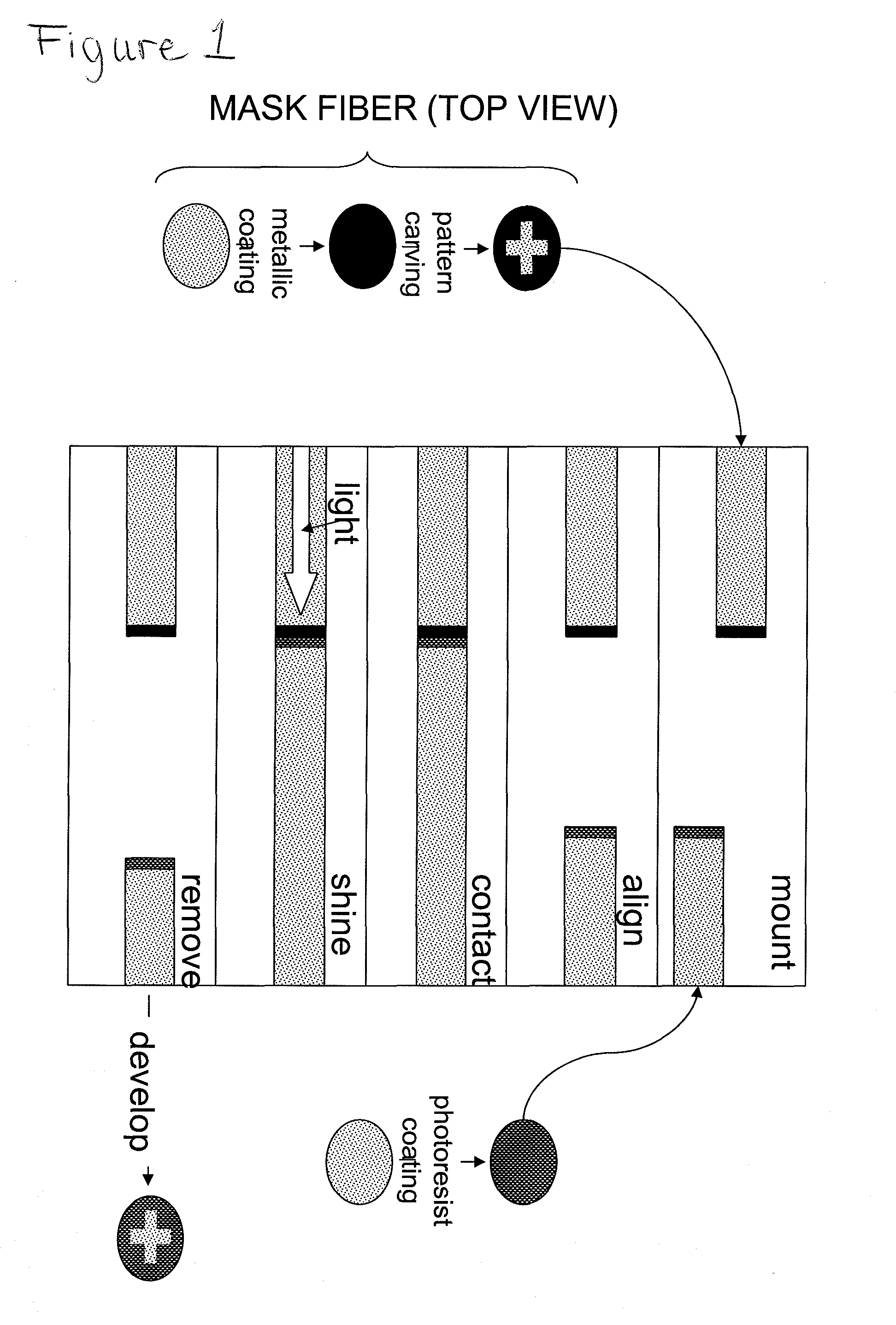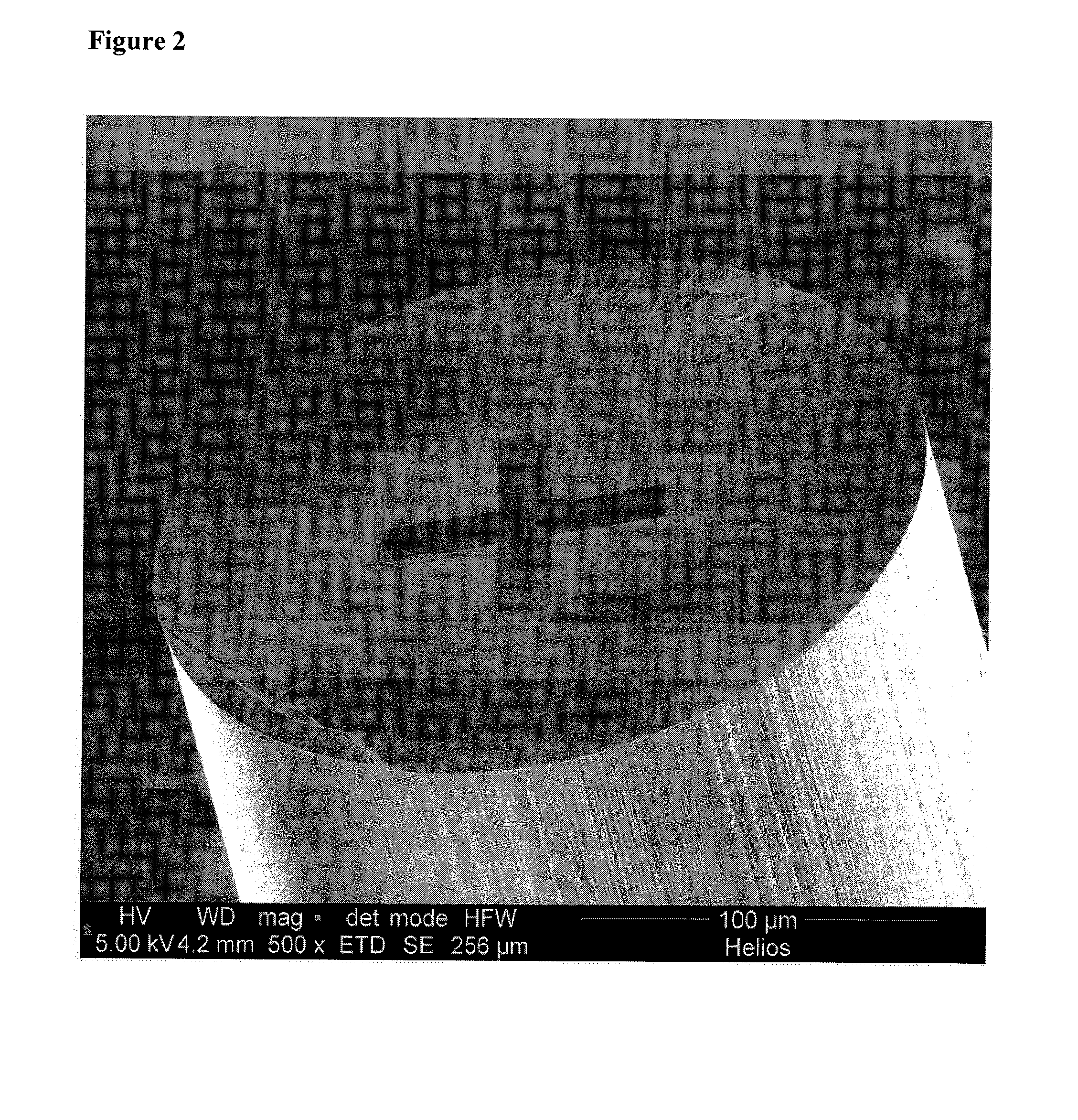Optical fiber, method of preparation thereof and device
a technology of optical fiber and optical fiber, applied in the field of optical fiber, can solve the problems of large production cost, inability to adapt to the needs of different applications, and inability to achieve the effect of facilitating a series production of arbitrary patterns
- Summary
- Abstract
- Description
- Claims
- Application Information
AI Technical Summary
Benefits of technology
Problems solved by technology
Method used
Image
Examples
Embodiment Construction
[0030]FIG. 1 shows a flow diagram of an exemplary embodiment of the align-and-shine photolithography procedure according to the present invention. For example, as shown on a left side of FIG. 1, a masked fiber could be an ultraviolet multimode fiber which can be first coated with a metallic layer, which metallic layer may then selectively be removed only along the pattern that must be reproduced on the target fiber. The target fiber (on a right side of FIG. 1) can be coated with photoresist. Thus, the lithography shadow mask can be fabricated directly on the cleaved end of the ultraviolet multimode fiber (e.g., the mask fiber), which may be aligned with another fiber coated with photoresist (e.g., the target fiber). Such two fibers may be mounted on an optical splicing machine, where they can be aligned and brought to contact. The pattern may be transferred from the mask fiber to the target fiber by shining, e.g., an ultraviolet light from the opposite side of the mask fiber. The ta...
PUM
| Property | Measurement | Unit |
|---|---|---|
| wavelength | aaaaa | aaaaa |
| diameter | aaaaa | aaaaa |
| diameter | aaaaa | aaaaa |
Abstract
Description
Claims
Application Information
 Login to View More
Login to View More - R&D
- Intellectual Property
- Life Sciences
- Materials
- Tech Scout
- Unparalleled Data Quality
- Higher Quality Content
- 60% Fewer Hallucinations
Browse by: Latest US Patents, China's latest patents, Technical Efficacy Thesaurus, Application Domain, Technology Topic, Popular Technical Reports.
© 2025 PatSnap. All rights reserved.Legal|Privacy policy|Modern Slavery Act Transparency Statement|Sitemap|About US| Contact US: help@patsnap.com



